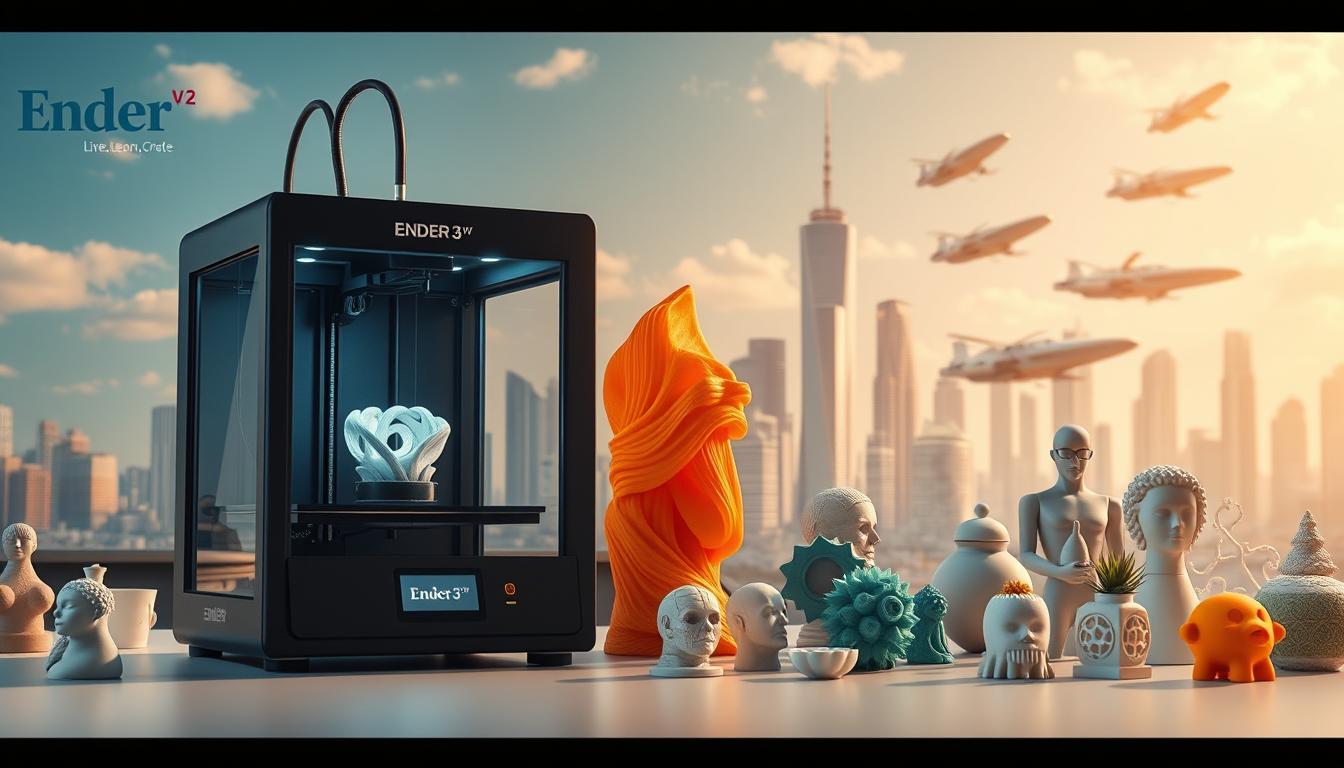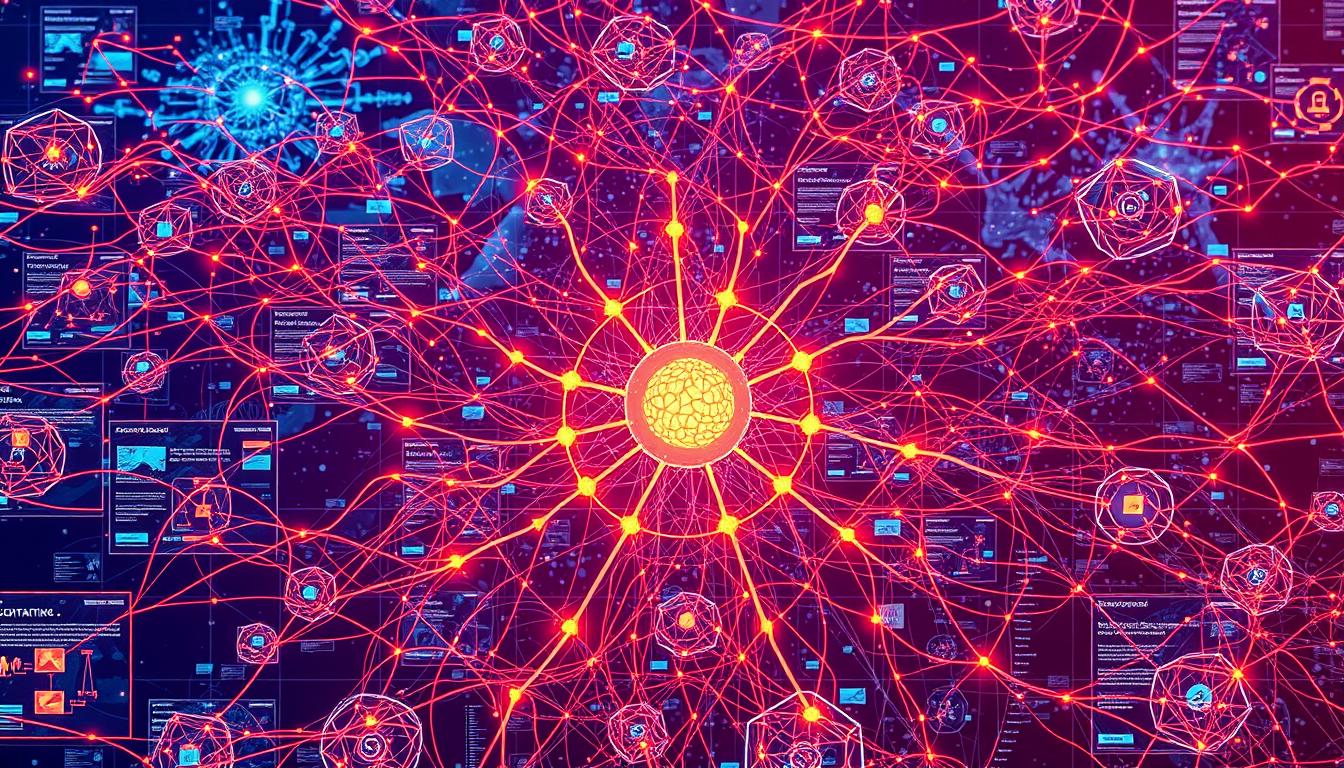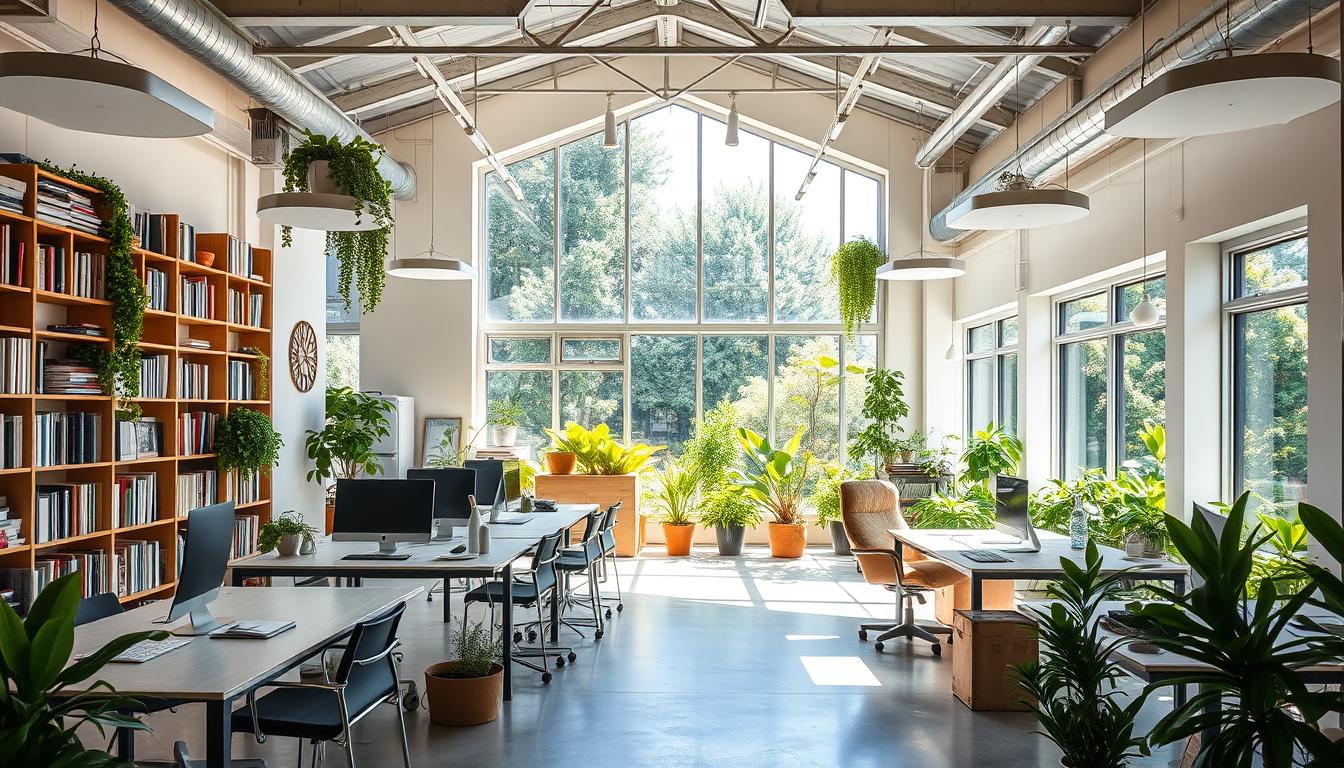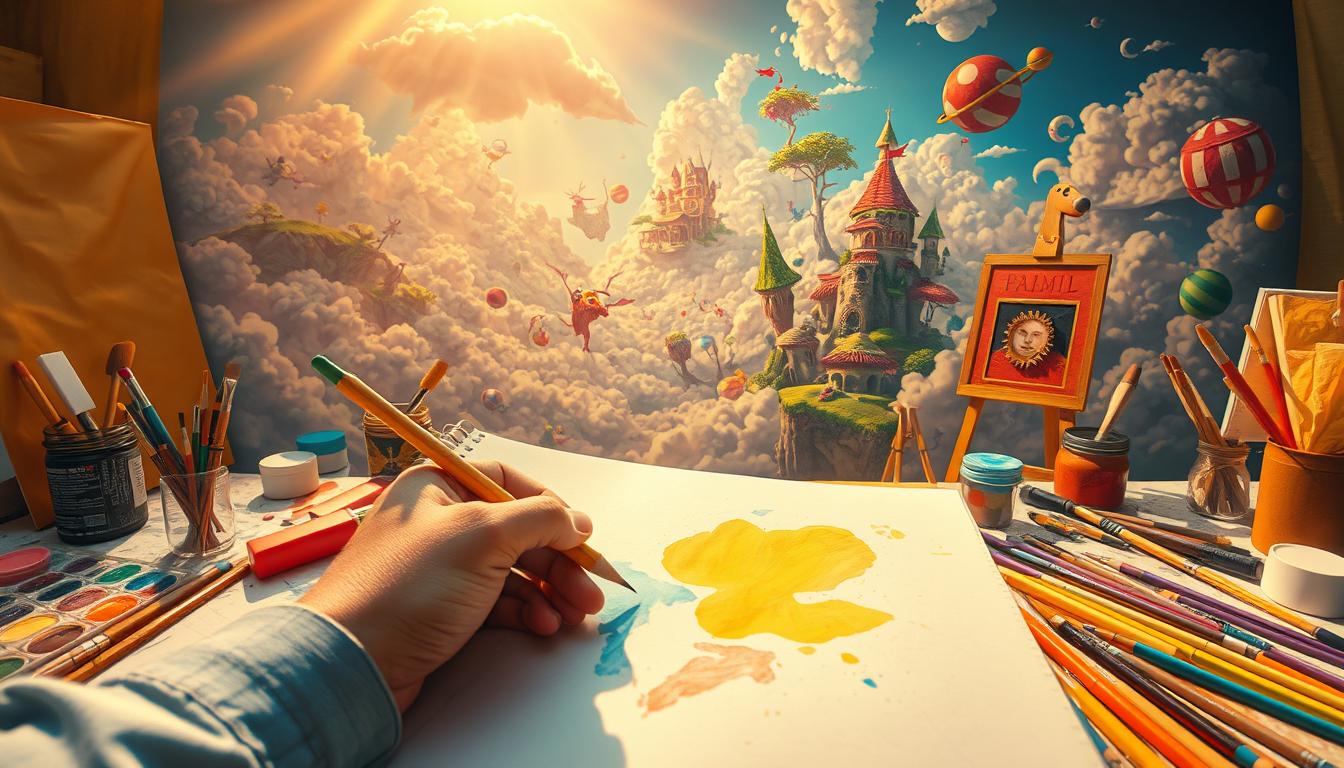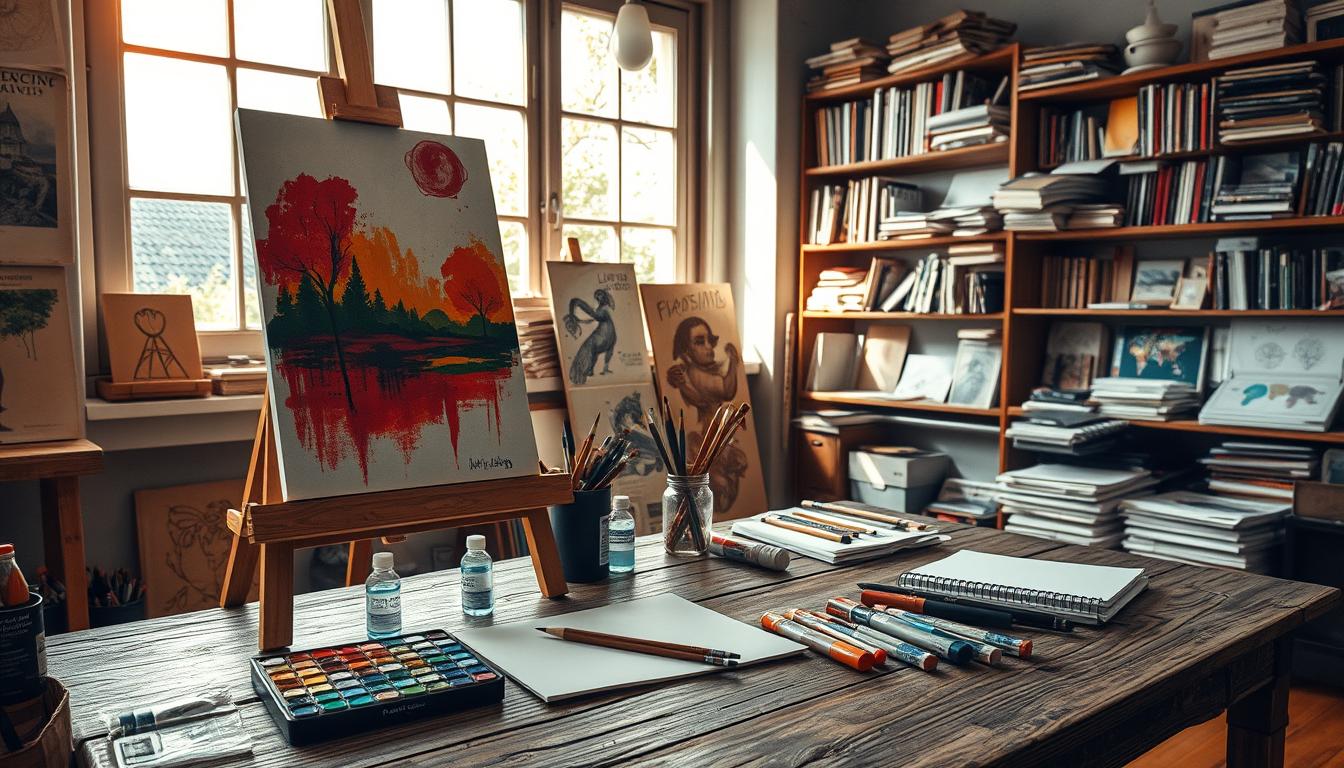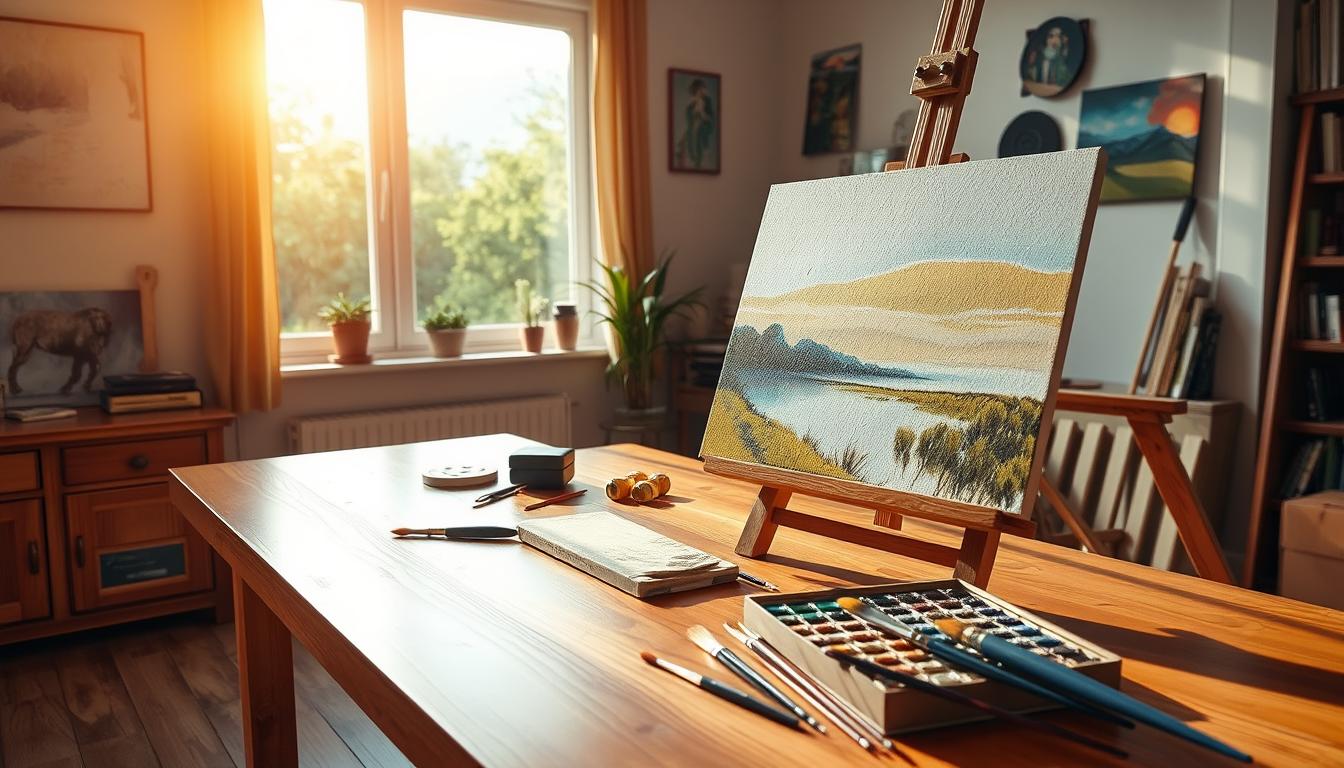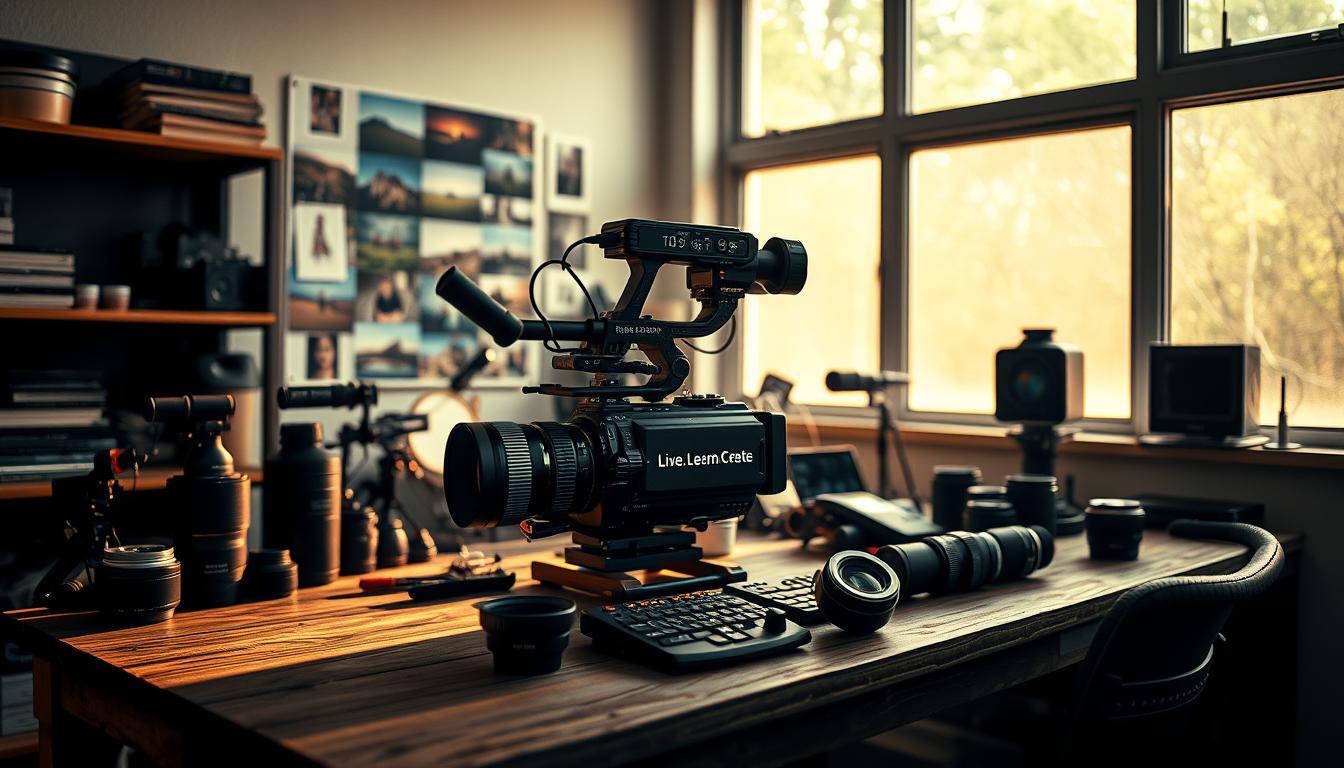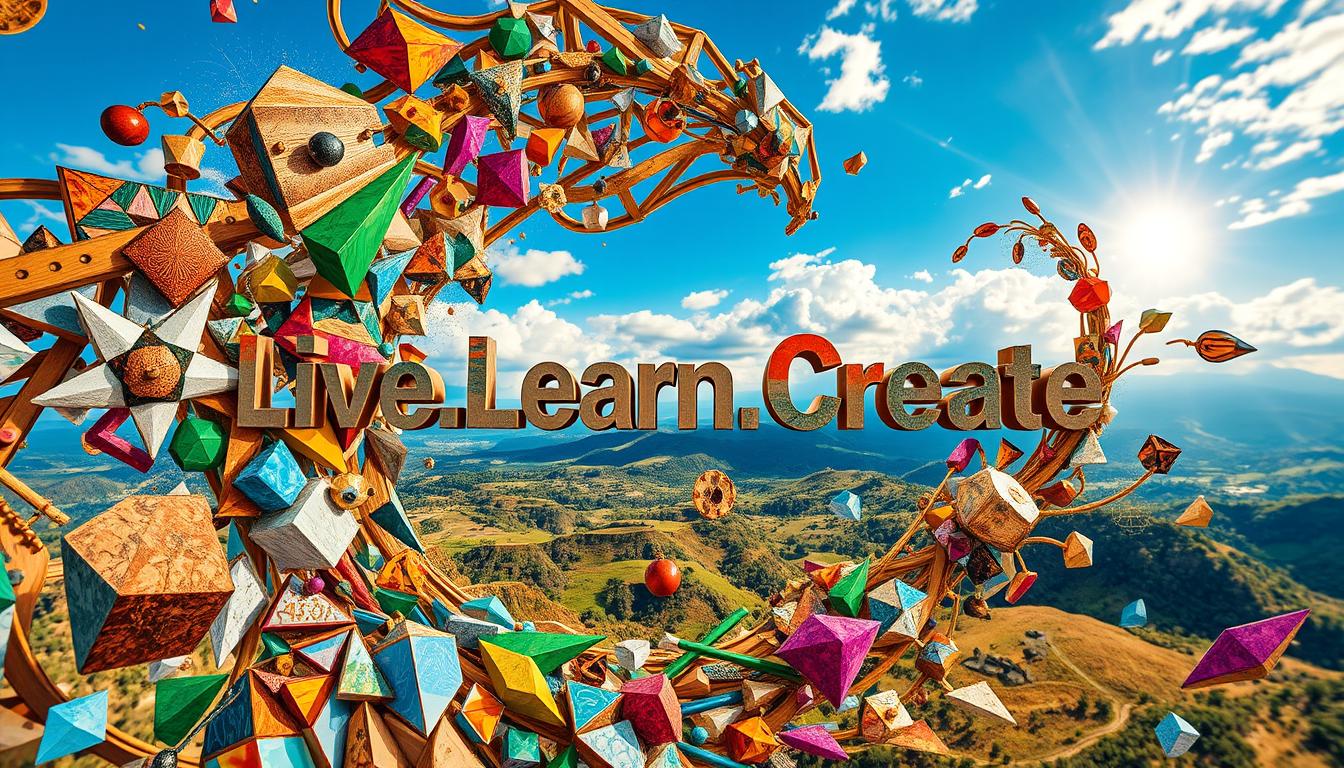Imagine a world where making complex designs and prototypes is easy. This is now possible thanks to additive manufacturing. It has made many industries, from art to healthcare, more versatile. As we look into rapid prototyping, it’s clear this tech has changed how we create and innovate.
Are you an artist wanting to bring your designs to life? Or a business looking to make new products? The possibilities are endless. In this article, we’ll cover the basics, its uses, and what’s coming next. For more, check out https://livelearncreate.blog/blog/.
Key Takeaways
- Understanding the basics of additive manufacturing
- Exploring its applications across various industries
- Discovering the benefits of rapid prototyping
- Learning about future trends in 3D printing technology
- Finding resources for further learning and exploration
What is 3D Printing?
Imagine making things layer by layer with 3D printing technology. This new way of making things is changing how we design and make products in many fields.
Definition and History
3D printing, or additive manufacturing, makes solid objects from digital files. It started in the 1980s with the first 3D printing technologies. Now, it includes Fused Deposition Modeling (FDM), Stereolithography (SLA), and Selective Laser Sintering (SLS). Each has its own uses and benefits, making 3D printing very versatile.
The history of 3D printing shows big tech advances. It has moved from quick prototypes to full production use. It’s come a long way.
How It Works
3D printing builds objects layer by layer. It starts with a digital model made with CAD software or 3D modeling tools. The model is sliced into thin layers to guide the 3D printer.
- FDM printing melts plastic filament and layers it.
- SLA uses a laser to harden liquid resin into solid objects.
- SLS fuses powdered material with a laser, layer by layer.
Each 3D printing technology has its own strengths for different projects. Knowing how 3D printing works is key to using it in many areas, like making things and medical innovations.
Exploring 3D printing shows it’s more than making objects. It’s changing how we make things. With its ability to make complex shapes and custom products, 3D printing will keep growing and changing industries.
Applications of 3D Printing
3D printing technology is growing fast, opening new doors in many fields. It’s changing how we make and innovate things. Now, companies use rapid prototyping and production thanks to 3D printing services.
Manufacturing and Prototyping
In manufacturing, 3D printing is a game-changer. It lets companies make complex shapes and custom parts quickly. This cuts down on time and money compared to old methods. The benefits are clear:
- Less time to make products
- More complex designs
- Products that fit each person’s needs
- Cost-effective for small batches
With materials like metals, plastics, and ceramics, 3D printing can make a wide range of things. From airplane parts to everyday items, it’s versatile.
![A high-tech 3D printing workshop, with advanced desktop and industrial-grade 3D printers [https://www.amazon.com/ANYCUBIC-Photon-Mono-SE-Printing/dp/B08ZBPDMZP] in the foreground. Engineers in protective gear operating the machines, surrounded by a variety of 3D printed objects like mechanical parts, architectural models, and consumer products. The scene is bathed in a warm, focused lighting, creating a sense of productivity and innovation. In the background, a large Live.Learn.Create. logo projects a sense of creative empowerment and exploration of new technologies. A high-tech 3D printing workshop, with advanced desktop and industrial-grade 3D printers [https://www.amazon.com/ANYCUBIC-Photon-Mono-SE-Printing/dp/B08ZBPDMZP] in the foreground. Engineers in protective gear operating the machines, surrounded by a variety of 3D printed objects like mechanical parts, architectural models, and consumer products. The scene is bathed in a warm, focused lighting, creating a sense of productivity and innovation. In the background, a large Live.Learn.Create. logo projects a sense of creative empowerment and exploration of new technologies.](https://livelearncreate.blog/wp-content/uploads/2025/08/A-high-tech-3D-printing-workshop-with-advanced-desktop-and-industrial-grade-3D-printers-1024x585.jpeg)
Medical Innovations
3D printing is making big strides in medicine. It’s making custom implants, prosthetics, and even organs. This is changing how we treat patients, offering better care and results.
Here are some medical uses of 3D printing:
- Custom implants and prosthetics
- Tissue engineering and organ printing
- Surgical models and guides
- Dental implants and orthodontic devices
Architecture and Construction
Architects and builders are using 3D printing for detailed models and complex designs. It makes quick work of intricate designs, improving the design and building process.
Here’s why 3D printing is great for architecture and construction:
- Fast creation of scale models
- Ability to make complex designs
- Less waste of materials
- More precise and accurate
Consumer Products
3D printing is also making personalized items like jewelry, home decor, and accessories. It lets people get unique products that fit their style, making their experience better.
Here are some examples of 3D printed consumer products:
- Customized jewelry and accessories
- Personalized home decor and furniture
- Custom phone cases and electronic accessories
Benefits of 3D Printing
3D printing, also known as additive manufacturing, offers many benefits. It saves money and allows for more customization. This technology is changing industries in big ways.
Cost-Effectiveness
One big plus of 3D printing is how it saves money. It only uses the material needed for the product. This cuts down on waste and saves costs, especially for complex items.
Customization and Personalization
Customization is a strong point of 3D printing. It lets us make products just for one person. This is great for things like consumer goods and medical devices. It opens up new design possibilities and makes customers happier.
Reduced Waste
3D printing also means less waste. It adds material layer by layer, unlike old methods that waste a lot. This saves money and helps the environment.
Quick Production Times
3D printing is also fast. It makes prototypes and products much quicker than before. This is key for companies that need to change designs fast or meet deadlines.
| Benefit | Description | Impact |
|---|---|---|
| Cost-Effectiveness | Reduces material waste and saves costs | Significant cost savings for complex products |
| Customization | Allows for tailored product design | Enhanced personalization and customer satisfaction |
| Reduced Waste | Additive process minimizes material waste | More sustainable manufacturing practices |
| Quick Production | Rapid turnaround for prototypes and products | Faster iteration and meeting deadlines |
The benefits of 3D printing are many. They include saving money, making things just for you, reducing waste, and making things fast. Using 3D printing services can help businesses innovate and stay ahead.
Types of 3D Printing Technologies
3D printing uses many technologies, each with its own strengths and uses. Knowing about these is key to seeing their full potential and what they can do.
Fused Deposition Modeling (FDM)
Fused Deposition Modeling, or FDM, is a common 3D printing method. It makes parts by adding melted plastic layer by layer. FDM printing is great for making prototypes and products because it’s affordable and easy to use.
FDM parts are strong and can handle a lot of use. But, they might need extra work to look smooth.
Stereolithography (SLA)
Stereolithography, or SLA, is known for making very detailed prints. It uses a laser to harden liquid resin, layer by layer. SLA printing is perfect for things like jewelry and dental models where detail matters a lot.
SLA prints are very detailed but can be more breakable than others.
Selective Laser Sintering (SLS)
Selective Laser Sintering, or SLS, uses a laser to melt and fuse powdered material. This makes strong, complex parts without needing extra support. SLS printing is great for making parts that need to be strong and have complex shapes.
| Technology | Key Features | Typical Applications |
|---|---|---|
| FDM | Cost-effective, good mechanical properties | Prototyping, production |
| SLA | High resolution, detailed prints | Jewelry, dental models, precision parts |
| SLS | Complex geometries, durable parts | Aerospace, automotive, functional parts |
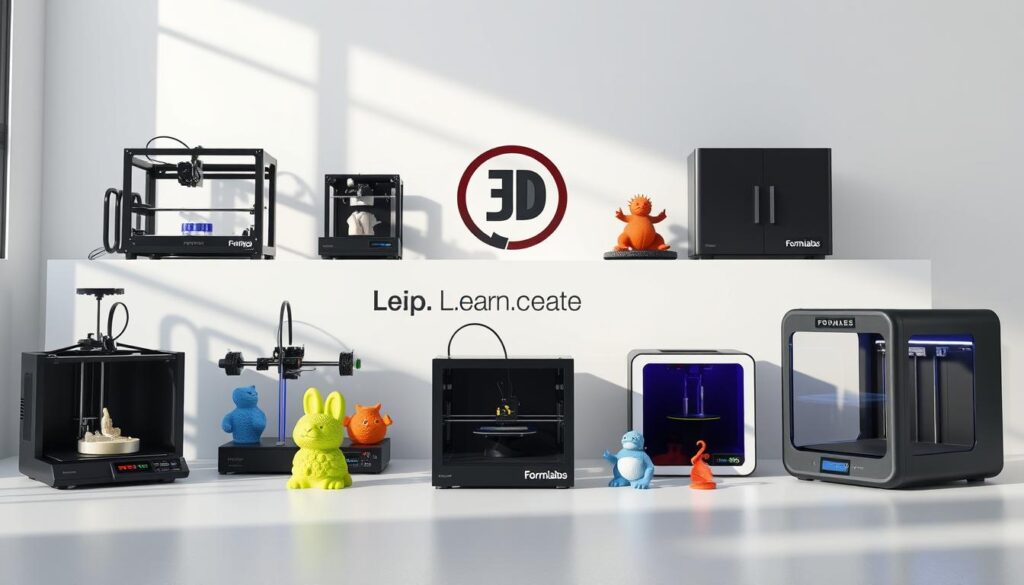
Knowing the strengths and uses of each 3D printing tech helps people and businesses choose the right one. Whether it’s FDM’s cost, SLA’s detail, or SLS’s strength, there’s a tech for every need.
Materials Used in 3D Printing
3D printing materials have grown, offering a wide range for creators and makers. Now, there are many materials for 3D printing, each suited for different uses.
Plastics
Plastics are a top choice for 3D printing because they are versatile and have many properties. You can make flexible parts or strong, rigid ones. This makes plastics great for many uses.
Key benefits of using plastics in 3D printing include:
- Cost-effectiveness
- Flexibility in terms of properties (e.g., flexibility, rigidity)
- Ease of use with most 3D printing technologies
Metals
Metals are used in 3D printing for their strength, durability, and ability to conduct heat. They’re perfect for industries like aerospace and automotive, where parts face high temperatures and stresses.
The use of metals in 3D printing has opened up new possibilities for creating complex parts that traditional methods can’t make.
Advantages of metal 3D printing include:
- High strength-to-weight ratio
- Excellent thermal conductivity
- Durability
Ceramics
Ceramics are used in 3D printing for their heat resistance, beauty, and durability. They’re great for artistic projects and industrial uses where their special properties are needed.
Ceramic 3D printing lets you make complex shapes that can handle high temperatures. This makes them perfect for ceramic components in machinery.
Getting Started with 3D Printing
3D printing technology is growing fast. The first step is to learn the basics and set up your space right. As you start with 3D printing, think about a few important things. They will affect your experience and the quality of your prints.
Choosing the Right Printer
Choosing the right 3D printer is key. It depends on print resolution, build volume, and cost. Beginners should find a balance between these factors and their budget. For example, if you want detailed prints, a high-resolution printer is needed.
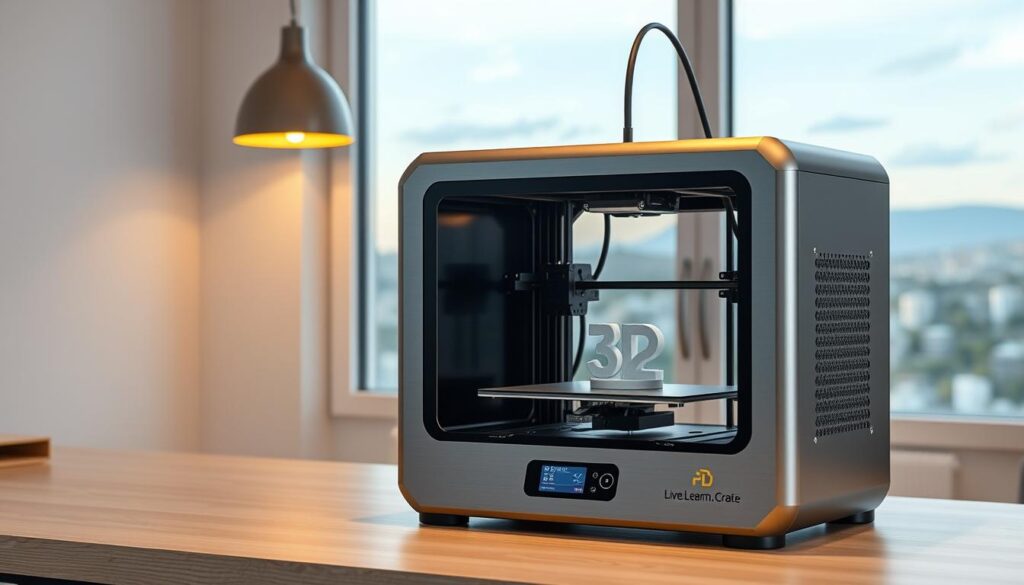
Essential Software and Tools
Essential software is also crucial for 3D printing. You’ll need slicers to make your 3D models printable and CAD programs for designing or changing models. Knowing these tools well is important for successful rapid prototyping and production.
Safety Considerations
Safety is important when using 3D printing technology. Good ventilation in your workspace is key to avoid inhaling fumes. Also, learn how to handle materials safely to avoid accidents. Always follow the guidelines from the manufacturer for your printer and materials.
By thinking about these points, you’ll be ready for a safe and successful 3D printing journey. Whether you’re a hobbyist or want to use 3D printing for business, a strong foundation is essential for success.
Challenges in 3D Printing
As 3D printing technology gets better, it faces many challenges. The 3D printing industry is not just about making new products. It’s also about dealing with the complex issues that come with this technology.
https://www.youtube.com/watch?v=GVDhAKxNcJA
Intellectual Property Issues
One big challenge in additive manufacturing is intellectual property (IP). Designs can be easily shared and copied, making IP protection a big concern. This is especially true in industries where designs are very valuable and sensitive.
To solve these problems, companies are looking into new ways to keep their designs safe. They are exploring encryption and legal solutions to protect IP in the digital world.
Limitations of Materials
The materials used in 3D printing services have big limitations. Right now, there are not many materials available for 3D printing. This limits what can be made and how long it lasts. Researchers are working to find new materials, like metals, ceramics, and things that are safe for the body.
Improving material science is key to solving these problems. It will help unlock the full potential of 3D printing technology.
Regulatory Hurdles
Regulations are a big issue, especially in fields like healthcare and aerospace. These industries have strict safety rules. The rules for additive manufacturing are still changing and differ a lot from place to place.
Getting through these regulatory challenges needs a good understanding of the current laws. It also requires working to create future rules that support the safe and effective use of 3D printing.
Future Trends in 3D Printing
The world of 3D printing is changing fast. New tech and a focus on being green are leading the way. It’s clear that 3D printing will keep growing in importance across many industries.
Advancements in Technology
Technology in 3D printing is getting better all the time. We’re seeing better print quality, faster speeds, and new materials. For example, new additive manufacturing methods are making it possible to create complex shapes and stronger parts.
Here are some key tech advancements in 3D printing:
| Technology | Description | Benefits |
|---|---|---|
| Fused Deposition Modeling (FDM) | A process that uses melted plastic to create objects layer by layer. | Cost-effective, easy to use. |
| Stereolithography (SLA) | A resin-based printing method that uses a laser to cure liquid resin. | High precision, smooth surface finish. |
| Selective Laser Sintering (SLS) | A technique that uses a laser to fuse particles together. | Strong, durable parts, complex geometries. |
Sustainability Efforts
The 3D printing world is getting greener. We’re seeing more eco-friendly materials, less waste, and better resource use. Now, 3D printing services are focusing on being sustainable, helping businesses go green.
Here are some ways 3D printing is becoming more eco-friendly:
- Using recycled materials
- Minimizing waste through precise manufacturing
- Developing biodegradable materials
Expansion into New Markets
3D printing is being used in more places than ever before. It’s being used in construction and biomedical fields, opening up new areas for innovation. As it keeps improving, we’ll see even more industries using 3D printing services.
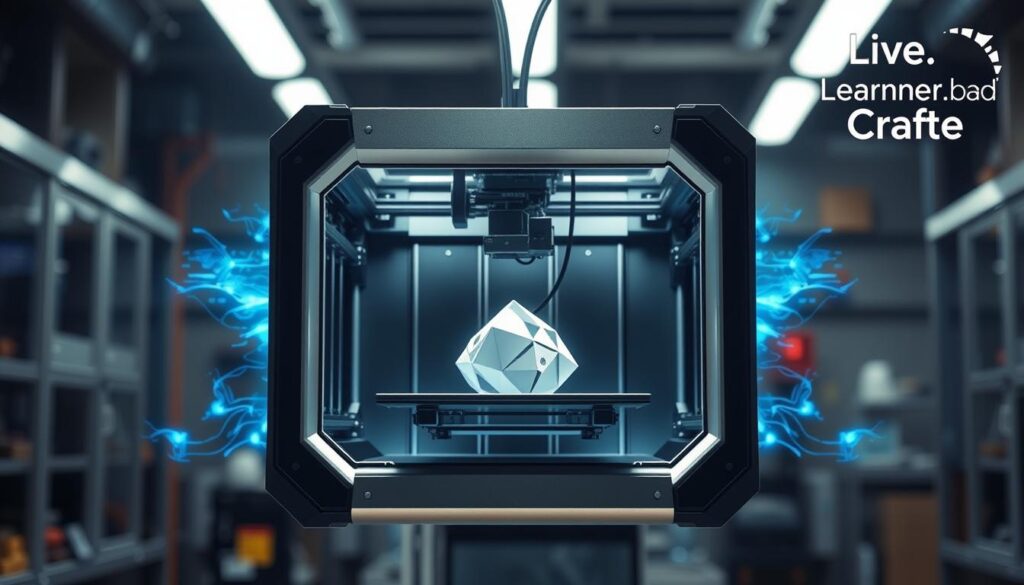
Looking ahead, 3D printing will keep being key in tech, sustainability, and new markets. By embracing these trends, businesses and people can stay ahead and make the most of 3D printing’s benefits.
How to Incorporate 3D Printing into Your Business
Integrating 3D printing services can change the game for businesses. It boosts efficiency, cuts costs, and lets you make custom products. This meets the needs of your customers perfectly.
Identifying Opportunities for Innovation
Start by finding where 3D printing can make things better. Use it for quick product tests or to make production smoother.
Building a Comprehensive Strategy
After spotting opportunities, create a plan that fits your business goals. Figure out how much you need to invest in 3D printing tech. Also, train your team to use these services well.
Collaborating with Experts
Working with 3D printing experts is key. They help you understand and use the tech right. This way, you can make the most of 3D printing and achieve lasting success.
FAQ
What is 3D printing, and how does it work?
3D printing is a way to make objects by adding layers. It uses technologies like FDM, SLA, and SLS. These methods create objects from different materials.
What are the different types of 3D printing technologies?
There are several 3D printing technologies. FDM is good for making prototypes. SLA creates high-resolution prints. SLS is for making strong, complex parts.
What materials can be used in 3D printing?
You can use plastics, metals, and ceramics in 3D printing. Plastics are versatile. Metals are strong. Ceramics are heat-resistant and look good.
What are the benefits of using 3D printing?
3D printing is cost-effective and customizable. It reduces waste and is quick. It’s great for making complex objects and prototyping.
How do I get started with 3D printing?
First, pick the right printer for you. Look at resolution, volume, and cost. You’ll also need software like slicers and CAD programs. Don’t forget safety.
What are the challenges associated with 3D printing?
3D printing faces challenges like intellectual property issues and material limitations. It also has regulatory hurdles in healthcare and aerospace. Overcoming these is key.
How can 3D printing be incorporated into a business?
Use 3D printing for innovation, like rapid prototyping or custom design. Create a strategy and work with experts. This helps with the technology’s complexities.
What are the future trends in 3D printing?
Future trends include better print quality, speed, and materials. There’s also a focus on sustainability. New markets like construction and biomedicine are emerging.
Transform your home into a more peaceful and mindful sanctuary. Creating a Zen-inspired home environment is a core part of the “Live.Learn.Create” theme, focusing on peace, mindfulness, and a clutter-free space. Here is a curated list of Zen home items.
The Zen Essentials
These items are the building blocks of a calm, intentional living space.
- Candles & Scents:
- Scented Candles: Look for calming, natural scents like sandalwood, lavender, white tea, or bergamot. Choose candles made with soy or beeswax for a clean burn.
- Essential Oil Diffusers: A minimalist, sleek diffuser made of bamboo, ceramic, or glass.
- Essential Oil Sets: Look for blends specifically for relaxation, focus, or sleep.
- Incense & Burners: Natural incense sticks (e.g., palo santo, sage) with a simple, elegant burner.
The Zen Decor
This is about incorporating natural elements and simple design.
- Natural Materials:
- Wood or Bamboo Trays: For organizing candles, stones, or other small items.
- Ceramic Vases: Simple, unglazed ceramic vases in neutral colors like white, beige, or gray.
- Minimalist Art: Simple line drawings, abstract prints, or nature-inspired artwork.
- Hand-Carved Stone Coasters: Or other small stone sculptures.
- Textiles:
- Linen or Cotton Throws: A soft, neutral-colored throw blanket to add warmth.
- Jute or Sisal Rugs: These add natural texture and grounding to a space.
- Meditation Cushions (Zafu) & Mats (Zabuton): These provide comfort for meditation and add a serene touch to a room.
The Zen Ambiance
These items help create a peaceful sensory experience.
- Lighting:
- Himalayan Salt Lamps: These provide a warm, soft glow.
- Japanese-style Paper Lanterns: For a soft, diffused light source.
- Dimmable Smart Bulbs: To easily control the warmth and brightness of your lighting.
- Sound:
- Tabletop Water Fountains: The gentle sound of running water is incredibly calming.
- Wind Chimes: Made from natural materials like bamboo or metal for a soft sound.
- Bluetooth Speakers: Small, aesthetically pleasing speakers for playing ambient or meditation music.
- Nature:
- Bonsai Trees or Air Plants: Low-maintenance indoor plants that bring life and a touch of nature indoors.
- Zen Gardens: A small, tabletop sand garden with a rake and stones for a meditative ritual.
- Decorative Rocks & Pebbles: For bowls or as a decorative element.
Best Sellers https://amzn.to/3Vet1tI
New Releases https://amzn.to/4mwLjTi
Amazon Movers & Shakers https://amzn.to/4fPsZlP
Mindfulness Coloring Books https://amzn.to/4fQ0wMx
Personal Growth Coloring Books https://amzn.to/4lJeRf0
Health & Wellness https://amzn.to/4oRt24C
Zen Home Decor https://amzn.to/3VeA3i6
Zen Garden Decor https://amzn.to/4mXjT8D
Zen Garden https://amzn.to/3HQTVVB
- Mindfulness & Meditation:
- Physical Wellness:
- Habit & Productivity Tools:
- Books:
- Best-selling personal development books (Mindset, The 7 Habits of Highly Effective People, The Subtle Art of Not Giving a F*ck)
- Books on a variety of skills (coding, photography, writing.)
- Educational Gadgets:
- Smart pens that digitize notes (e.g., Rocketbook)
- Portable scanners for digitizing documents
- Laptops, tablets, and accessories
Create (Creativity, Innovation, Projects)
These products cater to your creative side, whether you are a artists, writer, or DIY enthusiasts.
- Creative Supplies:
- Adult coloring books or “paint-by-sticker” books
- Craft kits (e.g., candle-making, pottery, embroidery)
- Digital Creation Tools:
- General Inspiration & Making:

